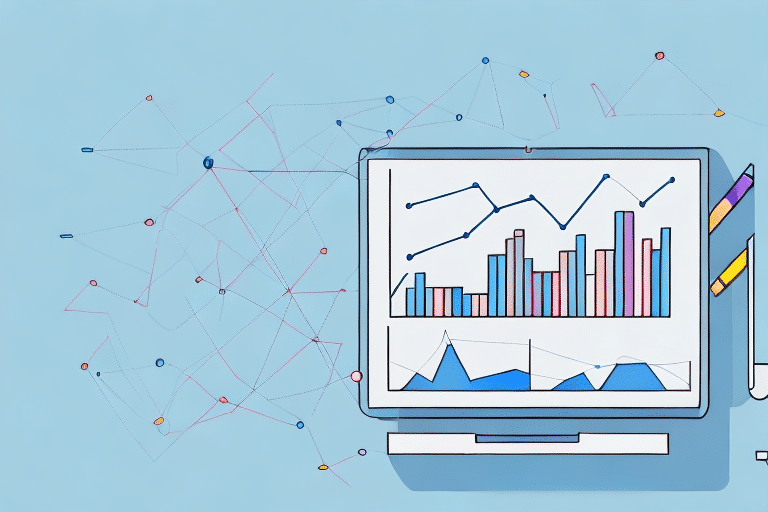Understanding Customer Retention Rates Across Different Industries
In today's competitive market, businesses strive to retain their customers, expand their customer base, and enhance their bottom line. A critical aspect of customer management is measuring customer retention rates. While acquiring new customers is essential for revenue growth, retaining existing customers is pivotal for sustainable business success and profitability. This article delves into the concept of customer retention rates—exploring its definition, significance, measurement methods, and influencing factors. We will also examine industry benchmarks, effective retention strategies, and the transformative role of technology in enhancing customer retention.
Why Customer Retention Matters More Than Acquisition
Acquiring new customers often requires substantial resources, time, and effort. In contrast, retaining existing customers is more cost-effective and beneficial for long-term success. Research from Harvard Business Review indicates that increasing customer retention rates by just 5% can boost profits by 25% to 95% (Harvard Business Review).
Key benefits of customer retention include:
- Cost Efficiency: Retaining customers is generally less expensive than acquiring new ones.
- Stable Revenue Stream: Loyal customers provide a reliable income source, facilitating future growth and investment.
- Brand Advocacy: Satisfied customers are likely to recommend the business to others, enhancing word-of-mouth marketing.
- Valuable Insights: Analyzing retained customers helps businesses understand preferences and improve offerings.
The Importance of Measuring Customer Retention Rates
Measuring customer retention rates is essential to evaluate the effectiveness of retention strategies. This metric calculates the percentage of customers who continue to use a company's products or services over a specified period.
How to Calculate Customer Retention Rate
- Determine the number of customers at the start of the period.
- Identify the number of customers at the end of the period.
- Subtract any new customers acquired during the period.
- Divide the remaining number by the initial number of customers and multiply by 100 to get the retention rate.
For example, if a company starts with 1,000 customers, gains 200 new customers, and ends with 1,100 customers, the retention rate is 90%.
Benefits of Measuring Retention Rates
By tracking retention rates, businesses can:
- Identify areas needing improvement to reduce customer churn.
- Benchmark performance against industry standards.
- Develop targeted strategies to enhance customer loyalty.
Factors Affecting Customer Retention Rates
Several factors influence customer retention rates:
Product and Service Quality
High-quality products and services that meet or exceed customer expectations are fundamental to retaining customers. Consistent quality fosters trust and satisfaction.
Customer Service
Exceptional customer service addresses issues promptly and effectively, enhancing the overall customer experience and encouraging loyalty.
Pricing and Promotions
Competitive pricing and attractive promotions can influence a customer's decision to stay with a brand. However, businesses must balance discounts with profitability.
Loyalty Programs
Rewarding repeat customers through loyalty programs incentivizes continued patronage and strengthens the customer-business relationship.
Market Competition
In highly competitive markets, customers have more options, making it crucial for businesses to differentiate themselves and offer unique value propositions.
Industry-Specific Insights on Retention
Software as a Service (SaaS)
The SaaS industry typically enjoys higher retention rates due to recurring subscription models. For instance, the average SaaS customer retention rate was approximately 75% in 2023 (Forbes).
Retail
Retail often experiences lower retention rates compared to SaaS, as purchases are frequently one-time transactions. Leveraging personalized marketing and loyalty programs can enhance retention in this sector.
Hospitality and Healthcare
Industries like hospitality and healthcare benefit from high retention rates due to the critical nature of their services and the emphasis on customer satisfaction.
Utilities and Insurance
These sectors typically see higher retention rates as customers prioritize reliability and consistency over switching to alternative providers.
Strategies to Improve Customer Retention
Personalization
Tailoring services and communications to individual customer preferences fosters a stronger connection and enhances satisfaction. Utilizing customer data to personalize interactions can significantly improve retention rates (McKinsey).
Loyalty Programs
Implementing rewards programs encourages repeat business by providing incentives for continued loyalty. Effective programs offer meaningful rewards that resonate with customers.
Exceptional Customer Service
Providing prompt, effective, and empathetic customer service resolves issues and strengthens customer trust, leading to higher retention.
Regular Engagement
Keeping in touch with customers through newsletters, updates, and personalized offers maintains engagement and reminds customers of the brand's value.
Feedback and Improvement
Soliciting customer feedback and acting on it demonstrates a commitment to meeting customer needs, thereby enhancing loyalty.
The Impact of Technology on Customer Retention
Advancements in technology have revolutionized customer retention strategies across industries. Key technological influences include:
Advanced Data Analytics
Data analytics tools enable businesses to gain deeper insights into customer behavior, preferences, and trends, facilitating more informed retention strategies.
Machine Learning and Artificial Intelligence (AI)
AI and machine learning algorithms can predict customer churn, personalize customer interactions, and automate customer service, making retention efforts more efficient and effective.
Customer Relationship Management (CRM) Systems
Modern CRM systems integrate various customer data points, providing a comprehensive view of customer interactions and enabling more targeted retention initiatives.
Omnichannel Communication
Technology facilitates seamless communication across multiple channels, ensuring consistent and personalized interactions that enhance customer satisfaction and loyalty.
Case Studies: Successful Customer Retention Strategies Across Different Industries
Hospitality: Marriott International
Marriott's loyalty program, Marriott Bonvoy, offers personalized rewards and exclusive experiences, resulting in a significant increase in repeat bookings and customer loyalty.
E-commerce: Amazon Prime
Amazon's Prime membership provides benefits like free shipping, exclusive deals, and streaming services, which enhance customer loyalty and retention.
Software: Salesforce
Salesforce invests in continuous customer support and training, ensuring users maximize the platform's value, leading to high retention rates.
Common Mistakes to Avoid When Implementing a Customer Retention Strategy
Implementing an effective customer retention strategy requires careful consideration. Common pitfalls include:
- Neglecting Customer Feedback: Ignoring customer input can lead to dissatisfaction and increased churn.
- One-Size-Fits-All Approach: Failing to tailor retention strategies to different customer segments can reduce effectiveness.
- Overlooking Employee Training: Inadequate training can result in poor customer service, negatively impacting retention.
- Lack of Personalization: Generic communications and offers may not resonate with customers, decreasing engagement.
Avoiding these mistakes by adopting a customer-centric approach ensures the success of retention efforts.
The Role of Personalization in Improving Customer Retention
Personalization enhances the customer experience by making interactions more relevant and meaningful. Techniques include:
- Customized Recommendations: Suggesting products or services based on past behavior increases engagement and sales.
- Personalized Communication: Addressing customers by name and tailoring messages to their preferences fosters a stronger connection.
- Dynamic Content: Offering content that adapts to individual customer needs improves satisfaction and loyalty.
Businesses that effectively implement personalization strategies often see higher retention rates and increased customer lifetime value (Salesforce).
Measuring the ROI of Investing in Customer Retention
Assessing the return on investment (ROI) for customer retention initiatives is crucial for determining their effectiveness. To measure ROI:
Calculate the Cost of Retention Efforts
Include expenses related to loyalty programs, personalized marketing, customer service enhancements, and technology investments.
Measure the Revenue from Retained Customers
Analyze the additional revenue generated from existing customers compared to new customer acquisitions.
Compare Costs to Revenue
Use the formula: ROI = (Revenue from Retained Customers - Cost of Retention Efforts) / Cost of Retention Efforts × 100.
Businesses that effectively invest in customer retention can achieve significant returns, often surpassing the ROI of traditional marketing efforts (Investopedia).
Future Outlook: Predictions for Customer Retention Across Industries
The future of customer retention is poised for transformation with ongoing technological advancements. Key predictions include:
- Increased Use of AI and Machine Learning: Enhanced predictive analytics will enable more proactive retention strategies.
- Greater Emphasis on Personalization: Businesses will leverage data to offer even more tailored experiences.
- Integration of Omnichannel Strategies: Seamless interactions across multiple platforms will become standard to meet customer expectations.
- Focus on Customer Experience (CX): Superior CX will remain a critical differentiator for retaining customers.
Staying abreast of these trends and adapting strategies accordingly will be essential for businesses aiming to maintain high retention rates and achieve sustainable growth.
Concluding Thoughts
Customer retention rates are vital indicators of business health across various industries. By accurately measuring and analyzing these rates, businesses can implement strategies to enhance customer satisfaction, loyalty, and long-term profitability. Continuous monitoring and adaptation of retention strategies to align with evolving customer behaviors and industry best practices are essential. While there is no universal solution for boosting retention rates, tailored approaches that consider specific industry dynamics, customer needs, and leveraging technology can foster enduring customer relationships and drive sustainable business success.






















